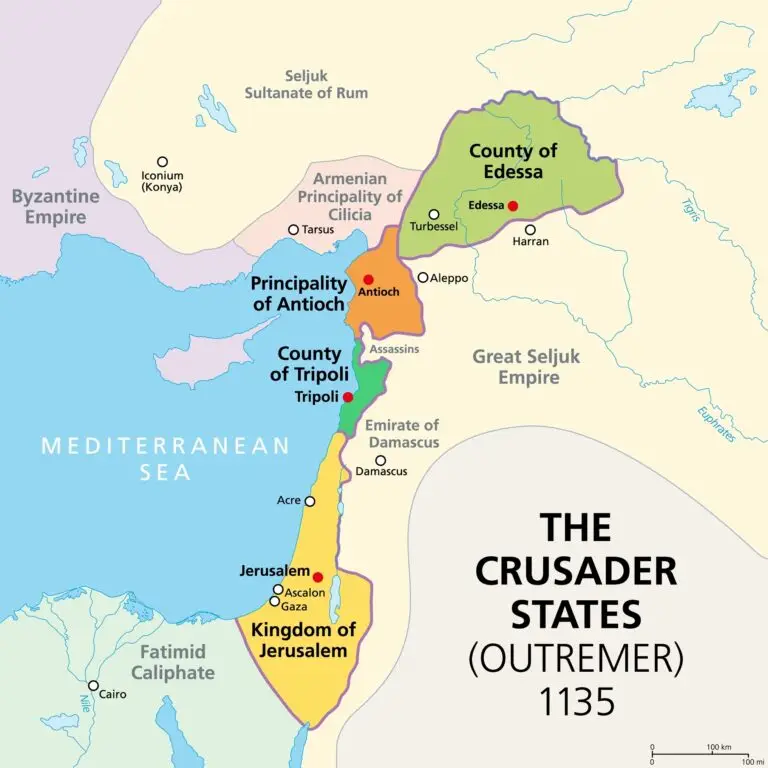Crusades

Table of Contents
What are the Crusades?
The Crusades were a series of religious and military campaigns initiated by Western Christians in the late 11th century and spanning into the late 13th century. The primary objective was to reclaim Jerusalem and other holy sites in the Levant from Muslim control, inspired by a vibrant mix of religious zeal, political ambition, and economic motives.
The First Crusade launched in 1096, succeeded in capturing Jerusalem in 1099, and established Crusader states in the Holy Land. Subsequent Crusades, including the Second, Third, and Fourth, aimed to consolidate or regain territories, but the outcomes varied.
The Crusades had profound and complex impacts, fostering cultural, economic, and intellectual exchanges between the East and West yet also contributing to religious intolerance and long-lasting tensions between Christian and Islamic civilizations.
History of the Crusades
The Crusades were a series of religious wars initiated by European Christians in the 11th century to capture Jerusalem and other holy sites in the Holy Land.
The First Crusade was launched in 1096, and it successfully resulted in the capture of Jerusalem in 1099, establishing the Latin Kingdom of Jerusalem.
The Crusades were sanctioned by the Catholic Church, with Pope Urban II issuing a call for the First Crusade in 1095 during the Council of Clermont.
The Crusaders comprised various European nobles, knights, and commoners who embarked on a journey to the Middle East, collectively known as the Holy Land.
Saladin, a Muslim military leader, played a prominent role in the Crusades and is mainly remembered for his recapture of Jerusalem in 1187 during the Third Crusade.
The Crusades spanned several centuries, with major Crusades occurring in the 12th and 13th centuries, including the Second Crusade (1147-1149) and the Fourth Crusade (1202-1204).
The Albigensian Crusade (1209-1229) targeted the Cathars, a religious sect considered heretical by the Catholic Church, in the Languedoc region of France.
The Children’s Crusade, a unique and tragic event in 1212, involved young people attempting to reach the Holy Land but ultimately facing hardship and exploitation.
The Crusades had significant economic, social, and cultural impacts on Europe, contributing to the growth of trade, the exchange of ideas, and the development of military technologies.
The failure of the Fourth Crusade to reach the Holy Land led to the sacking of Constantinople in 1204, further deepening the East-West schism within Christianity.
Related Links
Byzantine Empire
Middle Ages
Reconquista
Bubonic Plague